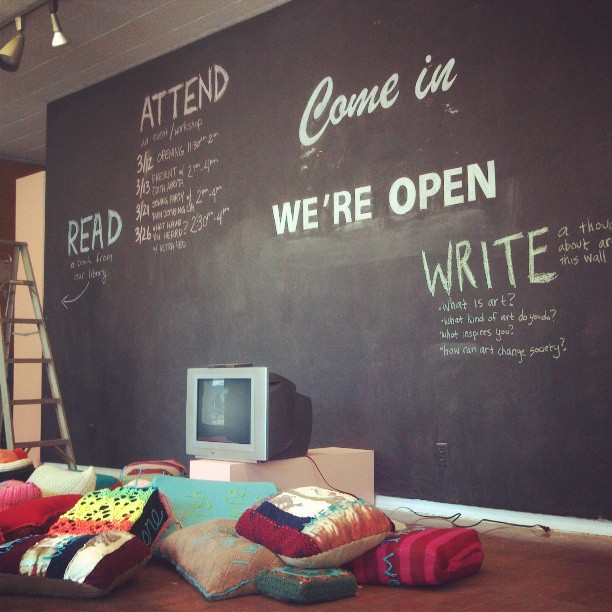with Carol Zou
02.03.2013
From: Zou, Carol. “Social Practice,” On the occasion of the show “Come In, We’re Open,” organized by Owen Driggs, Edith Abeyta and Yarn Bombing Los Angeles. PPS – Performing Public Space, March 2, 2013, New York, United States (video)
http://performingpublicspace.org/tania-bruguera
Social Practice
with Carol Zou
How do you define social practice?
The way in which I see social practice is not only a set of tools to engage in the social sphere, but also a way in which people can rethink the future and ways in which people can redefine governability and also ways in which society should work. I am ideologically not in favor of using social practice as a mere entertaining tool to generate sociability and to generate exchange between people for the sole reason of avoiding loneliness, but actually as a way to create new forms of engagement between human beings and new forms of transmission of social positions among certain issues and a new way to get together and discuss problem solving in society.
Please describe one of your recent projects and how it intersects with social practice.
Immigrant Movement International (IM International) is many things, actually. It is a long term project so therefore it cannot be seen in its whole entirety. It has to be experienced across time and through multiple experiences. So basically, IM International is an educational place where we try exercise the merging of creative knowledge with practical knowledge in order to generate political knowledge. It is a think tank place where we try to bring people over – academics, people from the community, artists, scientists, etc. to think together of ways in which we can create new ‘artivist’ tools – artivist as the merging of art and activism – in a way generate new language for the public sphere to protest and to dissent and to present new ideas. And it is also a place where we generate and where we’re trying to exercise Arte Útil, which is my concept for this social practice which is a situation which art is seen, as I said before, as a problem solving social tool.
What are some of the challenges facing social practice artists as you see it?
We’re using art in a very different way. We’re not using art because we want people to know the history of art, we don’t teach art because we want people to know famous artists’ names and know how to recognize their work when they see it. What we’re doing is using art as a language tool. We have, for example, a class – I always talk about this one because it is very clear. We have a class that is an art history class, and the people coming to that art history class are stay at home moms. So that’s not your normal students for that class. The stay at home moms come here, have this art history class, and what they talk about in that class, what they talk about is gender and identity issues through artworks. So by seeing artworks, by seeing representations of the female, they are talking about their own issues.
How do you envision social practice evolving in the future?
I think the first main challenge is that I am from an older generation, so that doesn’t help. so basically I was trained to be an individual artist with a very specific mandate. And the first challenge was that call against the authorship, and challenge the idea of what the author is, and also trying to see where are the collective ways in which I feel comfortable working, but also that feels right for the project.
Another challenge is the fact that people want to have a very definitive idea of the project. Every time someone reads about the project or comes here or something, they want to have “the” definition of the project, they want to have “the” experience of the project, and that is impossible. It is a long term project so it is a live animal that is changing all the time. So it feels like somehow we need to train for this type of practice the art audience. The people who use the project, they don’t care about – they only care about what they’re learning and what is the next step for them on this relationship. But people in the art world who are not committed to a long term relationship with the project – wich I think a mistake – I think if you want to have social art practice, you need to train the art audience to engage in a different way, to start taking responsibility for their engagement, and to start having a commitment in their engagement.
